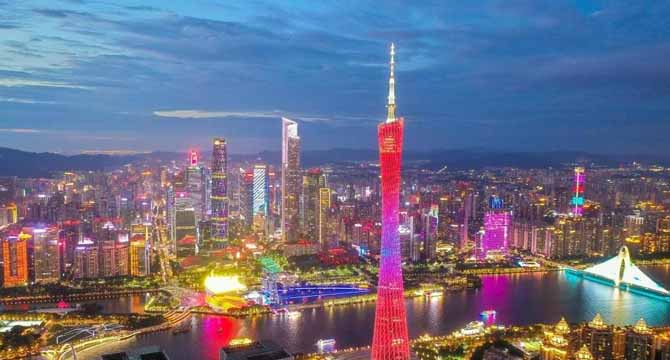GUANGZHOU, June 23 (Xinhua) — Belgian chocolates, Japanese sake, Iranian carpets, Peruvian alpaca toys, and Pakistani jade ornaments were among a wide range of commodities from countries and regions along the Belt and Road showcased at this year’s Guangdong 21st Century Maritime Silk Road International Expo.
The expo, held in the southern Chinese metropolis of Guangzhou early this month, attracted over 1,000 participating companies and generated deals worth nearly 2 billion yuan (around 279 million U.S. dollars).
As a renowned commercial metropolis with a history of over 2,200 years, Guangzhou witnessed thriving foreign trade and cultural exchange once again, telling the lasting story of China’s high-level opening up.
During the event, Abdullah Zafer H. Bin Abiyah, Consul General of Saudi Arabia in Guangzhou, expressed his delight in showcasing Saudi Arabia’s history and cultural heritage. He also highlighted the opportunity to establish deeper connections in energy cooperation, research and innovation, industrial projects, and financial collaboration with international friends he made during the event.
Situated on the banks of the Pearl River, Guangzhou is one of the starting points of the Maritime Silk Road and a flourishing city, which has built itself into a robust global trade hub through the ages.
Since the Qin (221-207 BC) and Han (202 BC-220 AD) dynasties, Guangzhou has been a major port and transportation hub on the Pacific coast. Archaeological findings from the tomb of the Nanyue King in the Western Han Dynasty (202 BC-25 AD) bear witness to the city’s foreign trade history dating back to over two thousand years ago, with the presence of artifacts including silver boxes from Persia, ivory from Africa, and incense and glassware from Southeast Asia and West Asia.
During the Tang (618-907) and Song (960-1279) dynasties, the establishment of bureaus for foreign shipping in Guangzhou marked the formalization and expansion of maritime trade. During the Ming Dynasty (1368-1644), the government began organizing biannual international trade fairs in Guangzhou, welcoming overseas merchants. These ancient versions of the “Canton Fair” focused on exporting silk, porcelain, tea, and cloth while importing woolen goods, cotton, metals, and spices.
By the Qing Dynasty (1644-1911), the Maritime Silk Road extended from Guangzhou to the world, and China was also connected to the world through Guangzhou.
With its thousand-year history as a commercial city, Guangzhou has developed characteristics of equality, inclusiveness, and pragmatism, shaping a favorable business atmosphere.
In 1957, China began holding the China Import and Export Fair (Canton Fair) twice a year in Guangzhou, which became an important channel for foreign exchange earnings. For over 60 years, the Canton Fair has never stopped and has played a crucial role as a wind vane and barometer of China’s foreign trade.
Guangzhou, as an important node in the Guangdong-Hong Kong-Macao Greater Bay Area, drives the Belt and Road Initiative constantly. The Nansha Port in Guangzhou has become an important economic and trade hub in the south of China, connecting with 151 foreign trade routes, including 124 routes to the countries along the Belt and Road.
The port has enabled the efficient transportation of goods, such as plastics and pulp, from Europe to Vietnamese factories, saving approximately 10 days compared to traditional sea transportation, according to Liu Heshun, general manager of Guangzhou Port Logistics Co., Ltd.
Since 2016, Guangzhou Customs has supervised the import and export of 91,900 20-foot equivalent units of goods via China-Europe freight trains, with a value of more than 27 billion yuan, and the scale has continued to expand while the categories have become increasingly diverse.
Moreover, the Pazhou artificial intelligence and digital economy pilot zone in Guangzhou has attracted leading enterprises such as Tencent, Alibaba, and Vipshop, promoting the development of e-commerce, industrial internet, big data, and digital creativity.
Guangzhou aims to provide a broader platform for deeper cooperation with countries and regions participating in the Belt and Road Initiative, contributing its wisdom and the intelligence of the Greater Bay Area to the world’s development.

